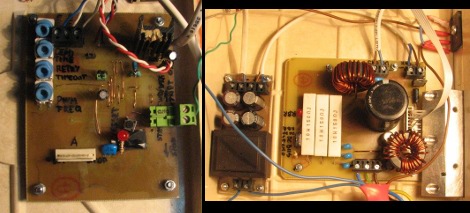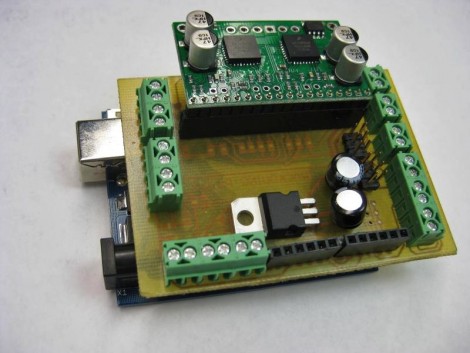
Here are the power and driver boards that [Miceuz] designed to control a three-phase induction motor. This is his first time building such a setup and he learned a lot along the way. He admits it’s not an industrial quality driver, but it will work for motors that need 200 watts or less of power.
The motor control board uses an MC3PHAC driver IC and an IRAMS06UP60A handles the power side of things. The majority of the board design came from studying the recommended application schematics for these two parts. But that’s far from all that goes into the setup. Motor drivers always include levels of protection (the whole reason to have a driver in the first place) and that comes in several different forms. [Miceuz] made sure to add EMI, over voltage, and over current protection. He discusses all of these, sharing links that explain the concepts of each.











